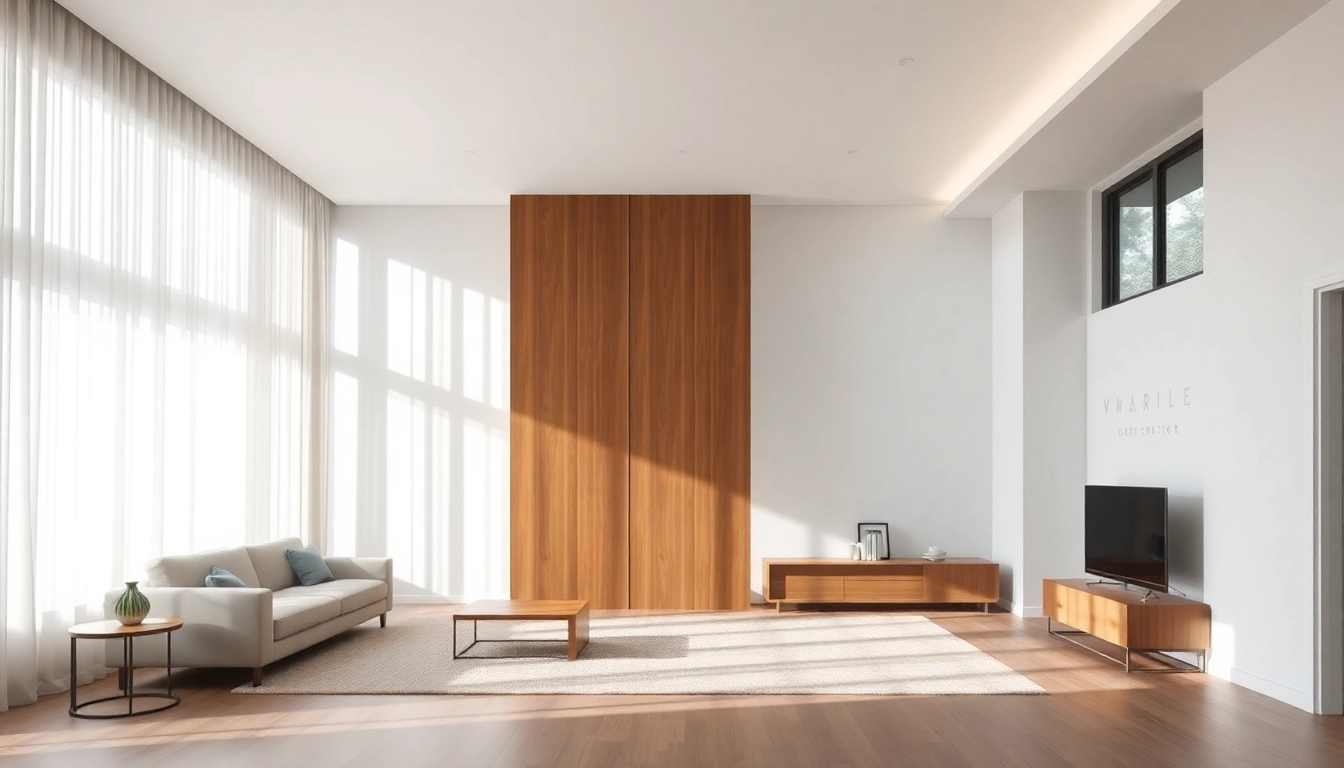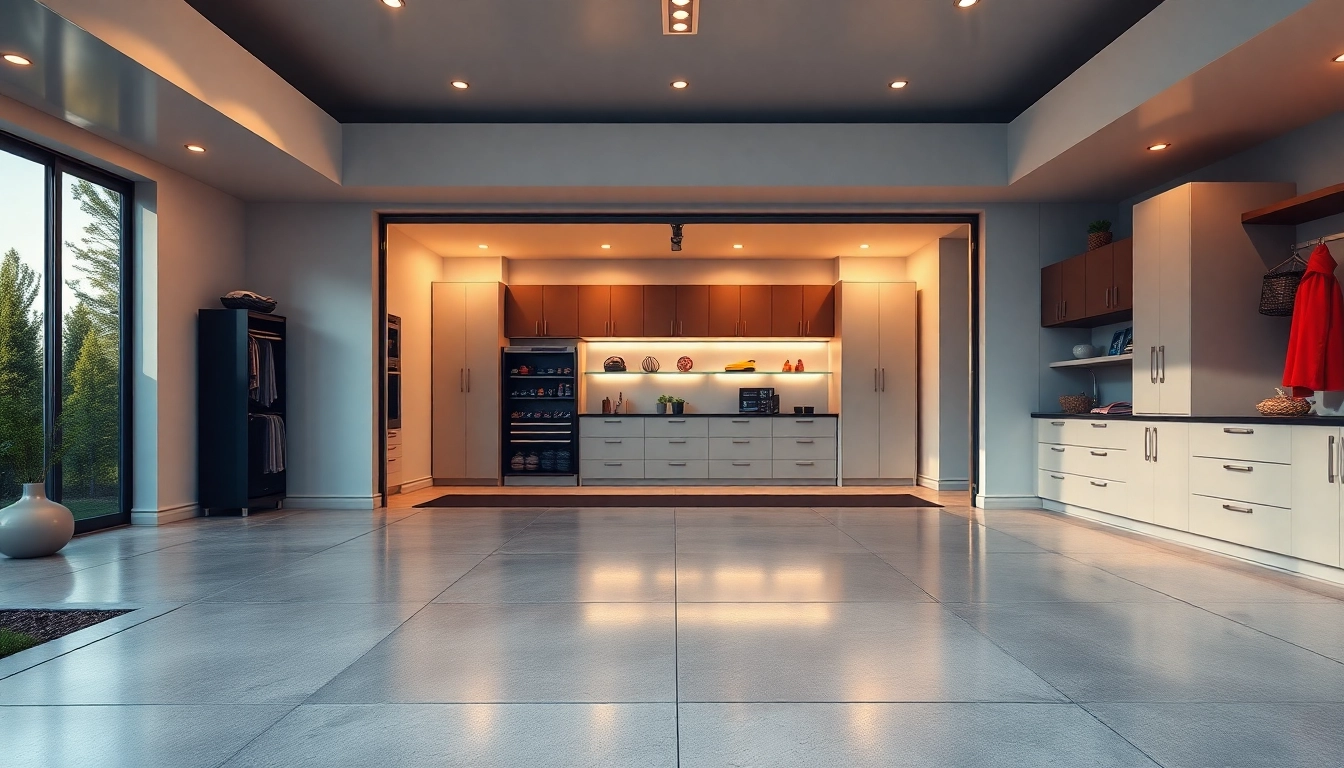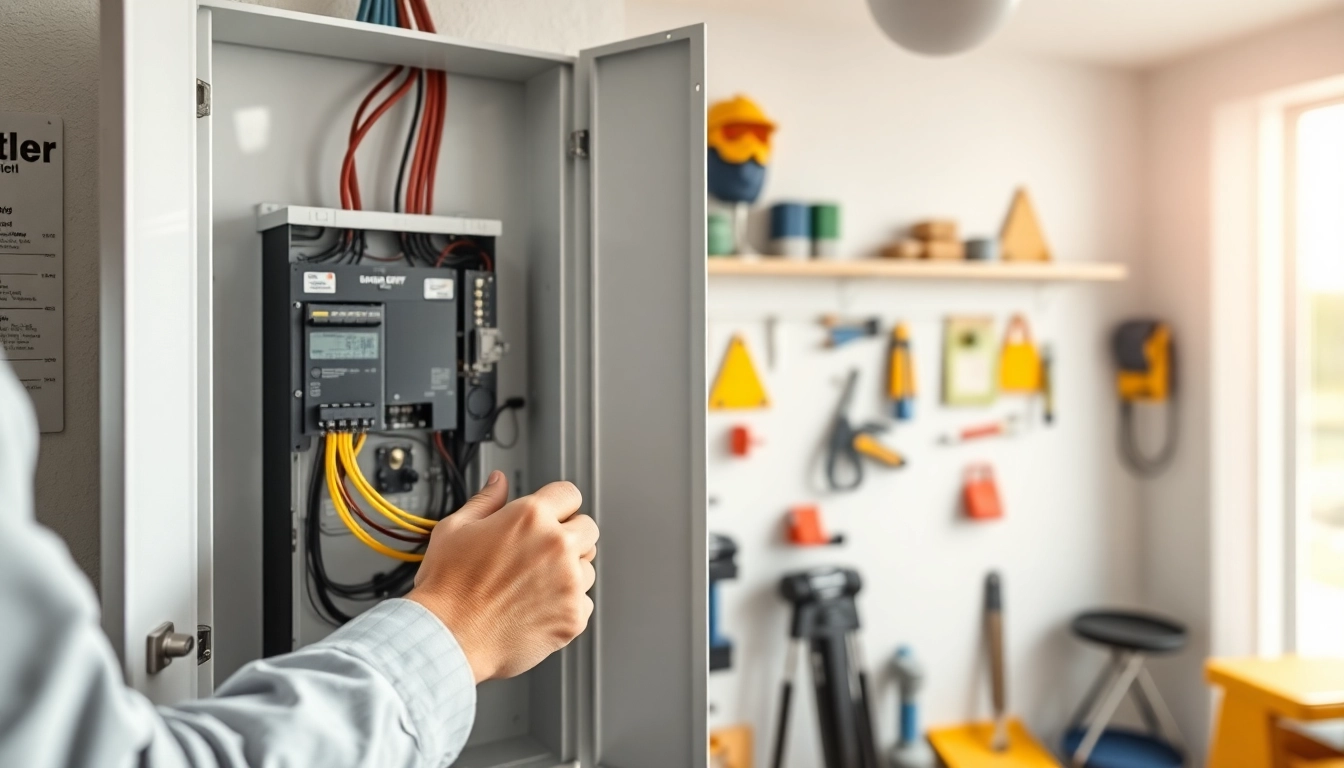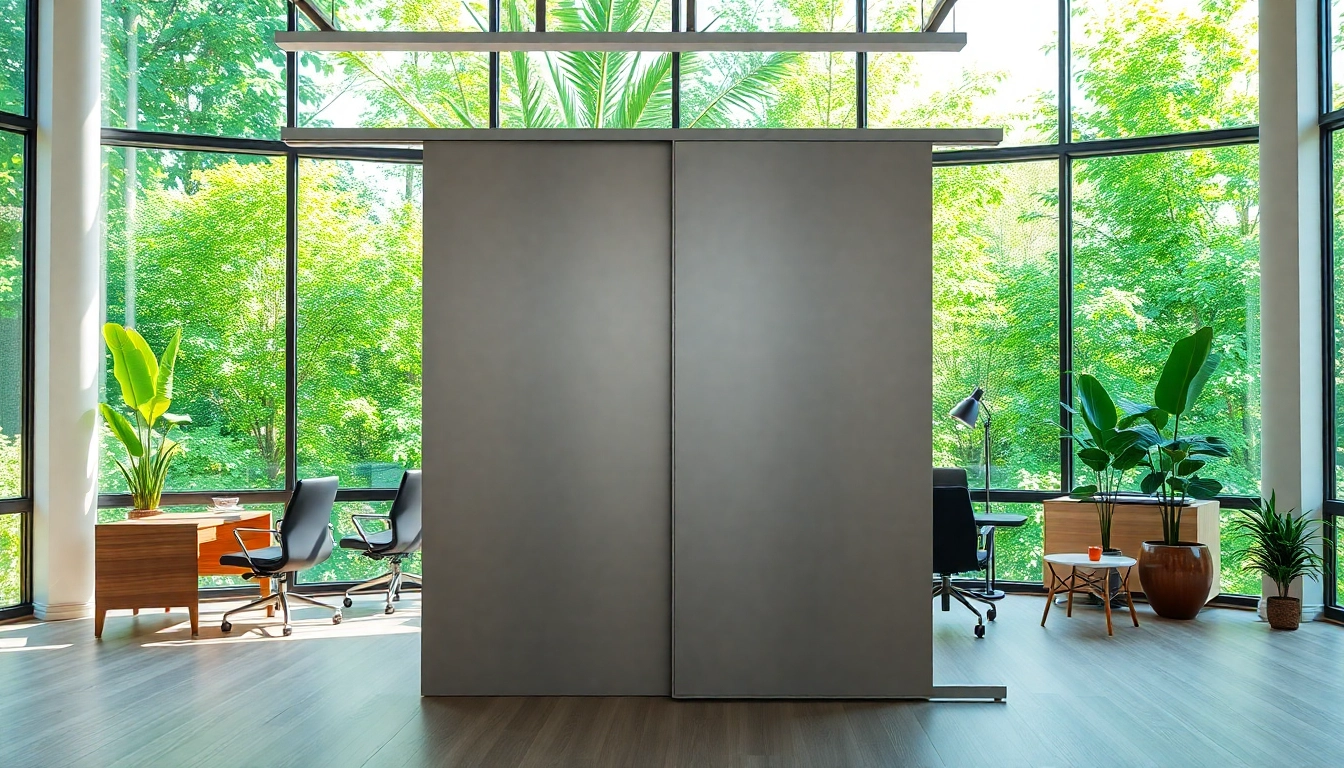Understanding the Sliding Partition Wall Concept
What is a Sliding Partition Wall?
A sliding partition wall is a versatile and modern solution designed to create temporary or adjustable spaces within a larger area. Typically mounted on tracks, these walls can be moved horizontally to divide or open up spaces, allowing for a flexible layout that adapts to various needs and occasions. Unlike traditional walls that are fixed and immovable, sliding partition walls offer an innovative approach to spatial management—whether for residential, commercial, or public uses.
The concept revolves around the idea of leveraging movement for functionality. These walls often feature lightweight materials, making them easier to handle while maintaining structural integrity. A sliding partition wall can be constructed from various materials, ensuring a perfect fit for aesthetic requirements and performance specifications.
Common Applications of Sliding Partition Walls
Sliding partition walls serve a multitude of purposes across different settings. Here are some common applications:
- Residential Spaces: Homeowners often utilize sliding partition walls to create multifunctional rooms. For instance, a living room can be transformed into a guest room or office space with ease.
- Commercial Environments: In offices, sliding walls can facilitate flexible workspaces, allowing companies to adjust areas as needed for collaboration or privacy.
- Educational Institutions: Schools and universities can use sliding partition walls to create adaptable classrooms that cater to different teaching styles and group sizes.
- Event Spaces: Venues can employ sliding walls to easily reconfigure their spaces for various activities, from weddings to meetings.
Key Materials Used in Sliding Partition Walls
The choice of materials for sliding partition walls significantly affects their performance, durability, and aesthetic appeal. Common materials include:
- Wood: Often used for a warm, traditional look, wood can be finished in various stains and paints for customization.
- Glass: Offering transparency and light flow, glass sliding partitions are popular in modern design, especially in commercial settings.
- Metal: Aluminum and other metals are favored for their robustness and minimal maintenance requirements.
- Fabric: Certain partitions use fabric panels that can be acoustically treated to enhance sound control while providing flexibility in design.
Benefits of Sliding Partition Walls
Space Optimization and Flexibility
One of the most significant advantages of sliding partition walls is their ability to optimize space. In environments where real estate comes at a premium, having the flexibility to adjust room sizes can make a substantial difference.
Unlike traditional walls which demand considerable time and effort for construction and demolition, sliding partition walls can be adjusted easily and quickly, thereby allowing homeowners and renters to change their living and working scenarios without permanent alterations.
Improved Aesthetics and Design Options
Today’s sliding partition walls are not just functional; they also serve as design elements that enhance the overall look of a space. Available in a wide array of finishes, colors, and styles, these partitions can seamlessly blend with existing décor or stand out as focal points. For example:
- Modern and Minimalistic Styles: Clear glass sliding walls pair beautifully with contemporary interiors.
- Rustic Varieties: Wooden sliding partitions can achieve a cozy, farmhouse feel ideal for traditional homes.
Cost-Effectiveness Compared to Traditional Walls
Installing a sliding partition wall is often more cost-effective than building conventional walls due to reduced labor and material costs. Furthermore, they do not require extensive structural changes, resulting in lower overall disruption during installation.
How to Choose the Right Sliding Partition Wall
Assessing Your Space Requirements
Before selecting a sliding partition wall, it’s crucial to assess your specific space requirements. Consider the following:
- Size and Dimensions: Measure the area to ensure that the sliding wall you choose will fit when in both an open and closed position.
- Intended Use: Determine whether you need absolute privacy, sound insulation, or just a visual barrier, as different materials and designs can cater to these needs.
Understanding Mechanisms and Operation
The mechanism employed for sliding partition walls varies, affecting both functionality and ease of use. There are primarily two types:
- Top-Hung Systems: These systems rely on a track mounted at the top, allowing smooth movement without any ground elements obstructing the flow of traffic.
- Bottom-Rolling Systems: These utilize a track at the floor level and are preferable when a sturdy foundation is present; they can distribute weight more evenly for heavier panels.
Factors to Consider: Style, Material, and Budget
Selecting the right sliding partition wall also depends on a variety of factors:
- Style: Ensure that the chosen partition matches the aesthetic theme of your space, whether contemporary, traditional, or eclectic.
- Material: Depending on your needs for insulation, aesthetics, and durability, different materials will suit your project better than others.
- Budget: Compare the long-term benefits of investing in higher-quality materials vs. short-term savings through cheaper alternatives.
Installation Guide for Sliding Partition Walls
DIY Installation vs. Professional Help
Deciding whether to install a sliding partition wall yourself or hire a professional can depend on your level of skill and the complexity of the installation. DIY installations can save costs but might require some technical knowledge, particularly with the mechanisms involved.
For those without experience in construction or woodworking, employing a professional can ensure that the installation is executed properly, reducing risks of errors that could lead to costly repairs.
Step-by-Step Installation Process
- Preparation: Measure and mark the desired location for the partition wall, ensuring adequate clearance for the sliding mechanism.
- Track Installation: Fix the upper track to the ceiling first, ensuring that it is level and secure.
- Panel Attachment: If using a top-hung system, attach the panels to the track; for a bottom-rolling system, ensure panels are lined up with the track on the ground.
- Final Adjustments: Check for smooth operation and make any necessary adjustments before securing all fixtures.
Maintenance Tips for Long-Lasting Use
Taking preventive measures can extend the lifespan of your sliding partition wall:
- Regularly clean the tracks and panels to avoid blockages and maintain smooth operation.
- Inspect mechanisms periodically for signs of wear or damage.
- Lubricate moving parts as required to ensure optimal performance.
Real-Life Examples and Case Studies
Residential Spaces Enhanced by Sliding Partitions
Many homeowners have successfully integrated sliding partition walls to transform their living environments. For instance, a couple in a two-bedroom apartment utilized a sliding wall to convert their living room into a home office during work hours, then slid it open for entertaining in the evenings. This approach resulted not just in space efficiency but also in better work-life balance.
Commercial Applications and Benefits
Businesses are using sliding partition walls to foster collaboration and creativity among teams. For instance, a tech startup installed sliding walls to create dynamic conference rooms that could easily convert into brainstorming zones, boosting productivity and collaboration. The investment in sliding partitions demonstrated tangible returns through improved staff engagement and satisfaction.
Innovative Designs from Leading Brands
Many leading brands have advanced the design of sliding partition walls, introducing smart solutions that marry technology with style. For instance, Raydoor offers customizable solutions that include integrated acoustic properties, enhancing privacy without sacrificing aesthetic choice. Similarly, Loftwall’s Glide partitions enable ADA-friendly configurations catering to varying needs.



